SS OhNo
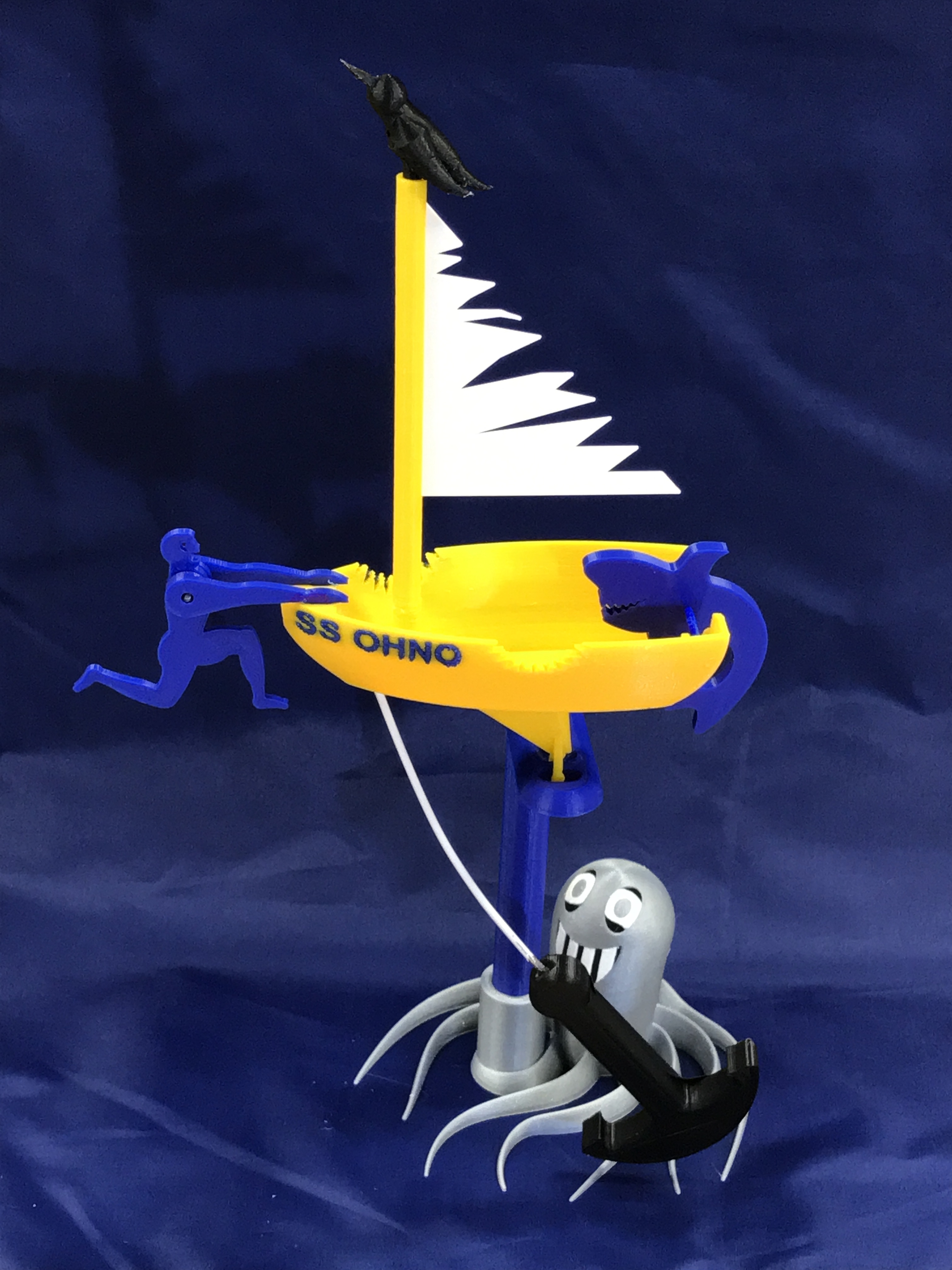
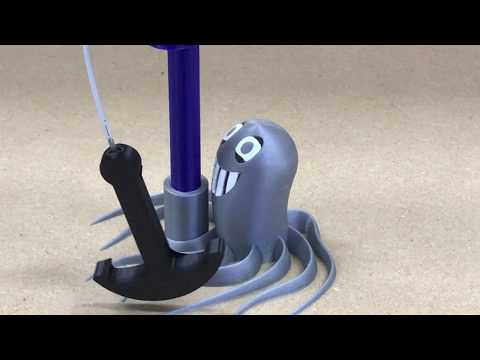
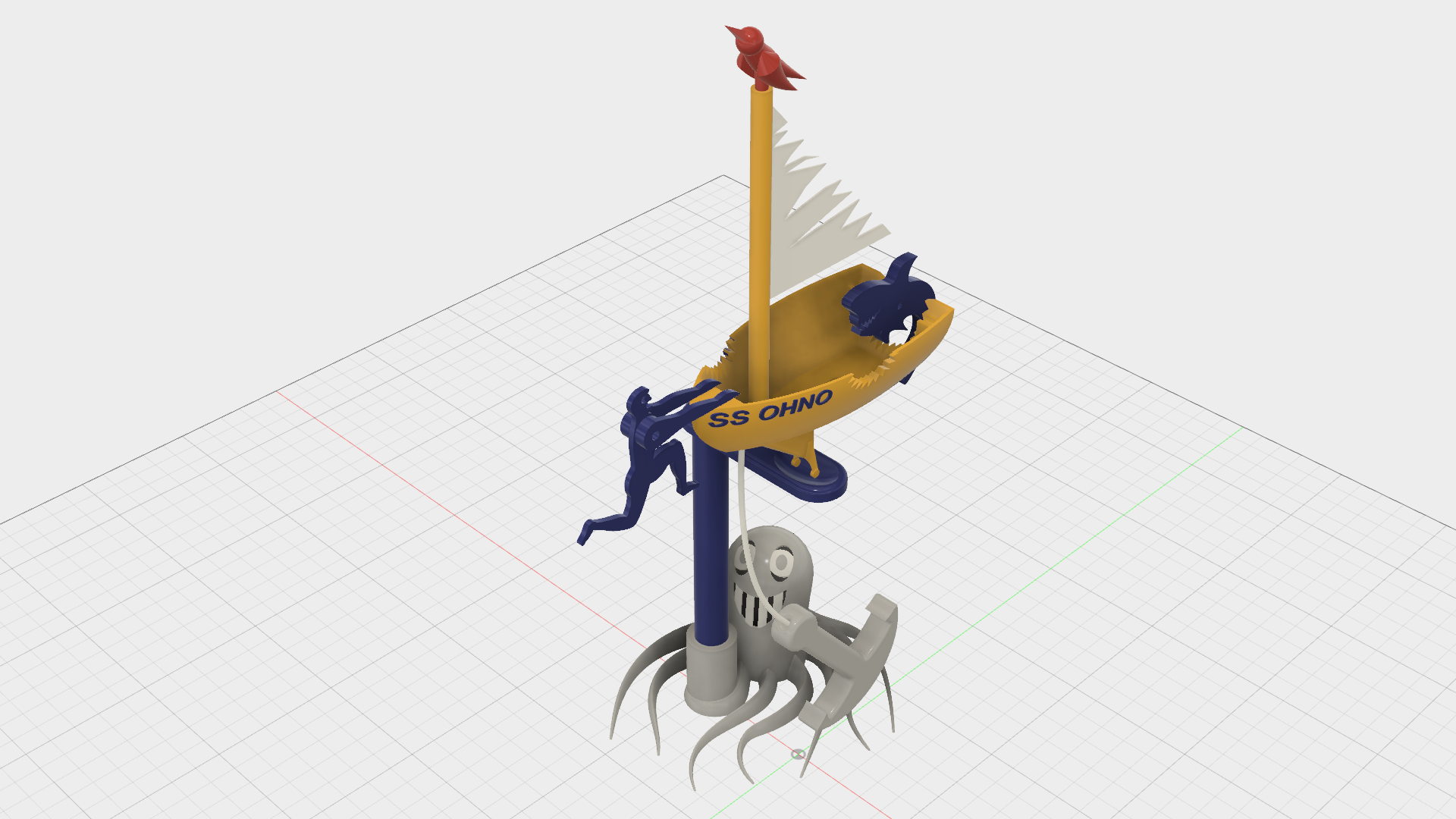
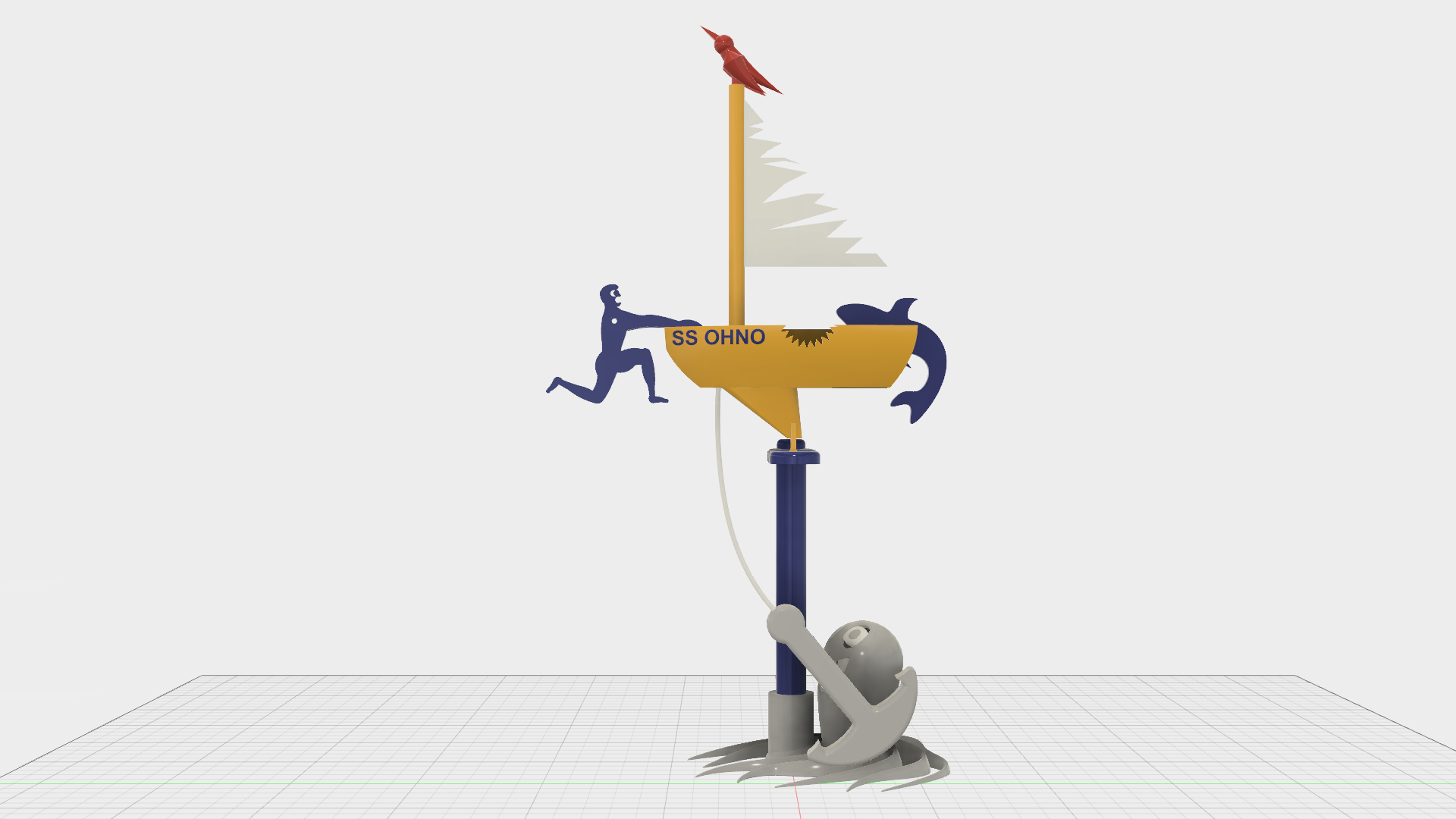
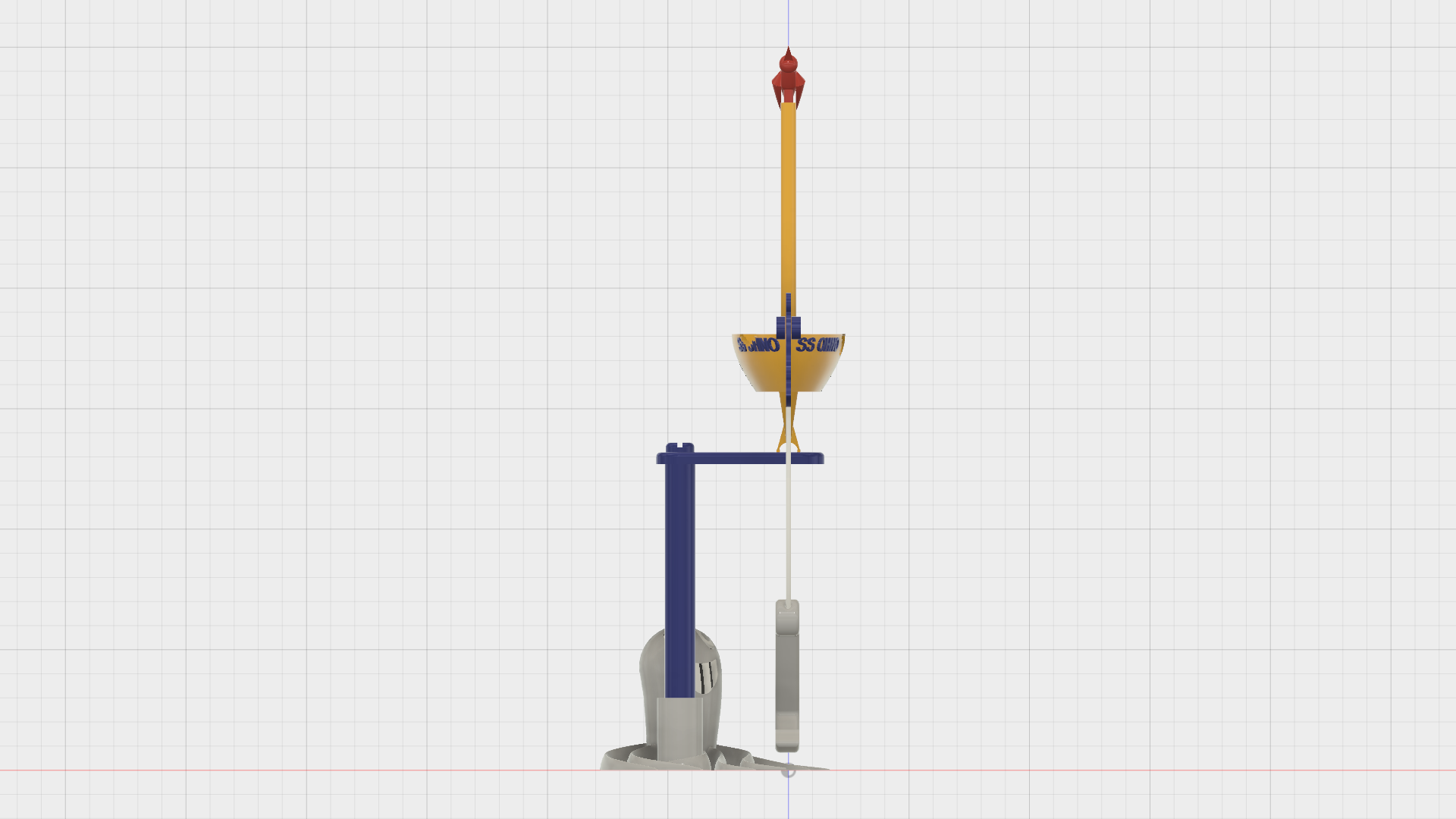
"SS OhNo" is a whimsical nautical themed study of balance and center of mass. Balanced on an Octopus base, the SS OhNo, it's captain, a hungry shark, tattered sail and a bird oscillate fore and aft with a gentle push on the boat's anchor.
Among the many Autodesk Fusion 360 advanced features I've stumbled across, one is center of mass. It works quite simply as follows; select "Center of Mass" from the "Inspect" menu, then select all of the components that you wish to include in the center of mass calculation. Fusion 360 will then display a center of mass icon at the center of mass point for the components you selected; brilliantly simple. For this model to balance, I knew the center of mass must be at or slightly below the keel cylinders, yet as indicated by Fusion 360 the center of mass was slightly above this point. I could easily have lowered the center of mass through the use of a taller tower design and lowering of the anchor (thus lowering the center of mass), but I desired a shorter tower. So to compensate, I designed the anchor such that it includes a container for additional mass (heavier than PLA) in the form of BBs, fine modeling sand, or similar heavy material.
As usual, I probably forgot a file or two or who knows what else, so if you have any questions, please do not hesitate to ask as I do make mistakes in plenty.
Designed using Autodesk Fusion 360, sliced using Cura 2.5, and printed in PLA on an Ultimaker 2+ Extended and an Ultimaker 3 Extended.
Purchase, Print and Prepare the Parts.
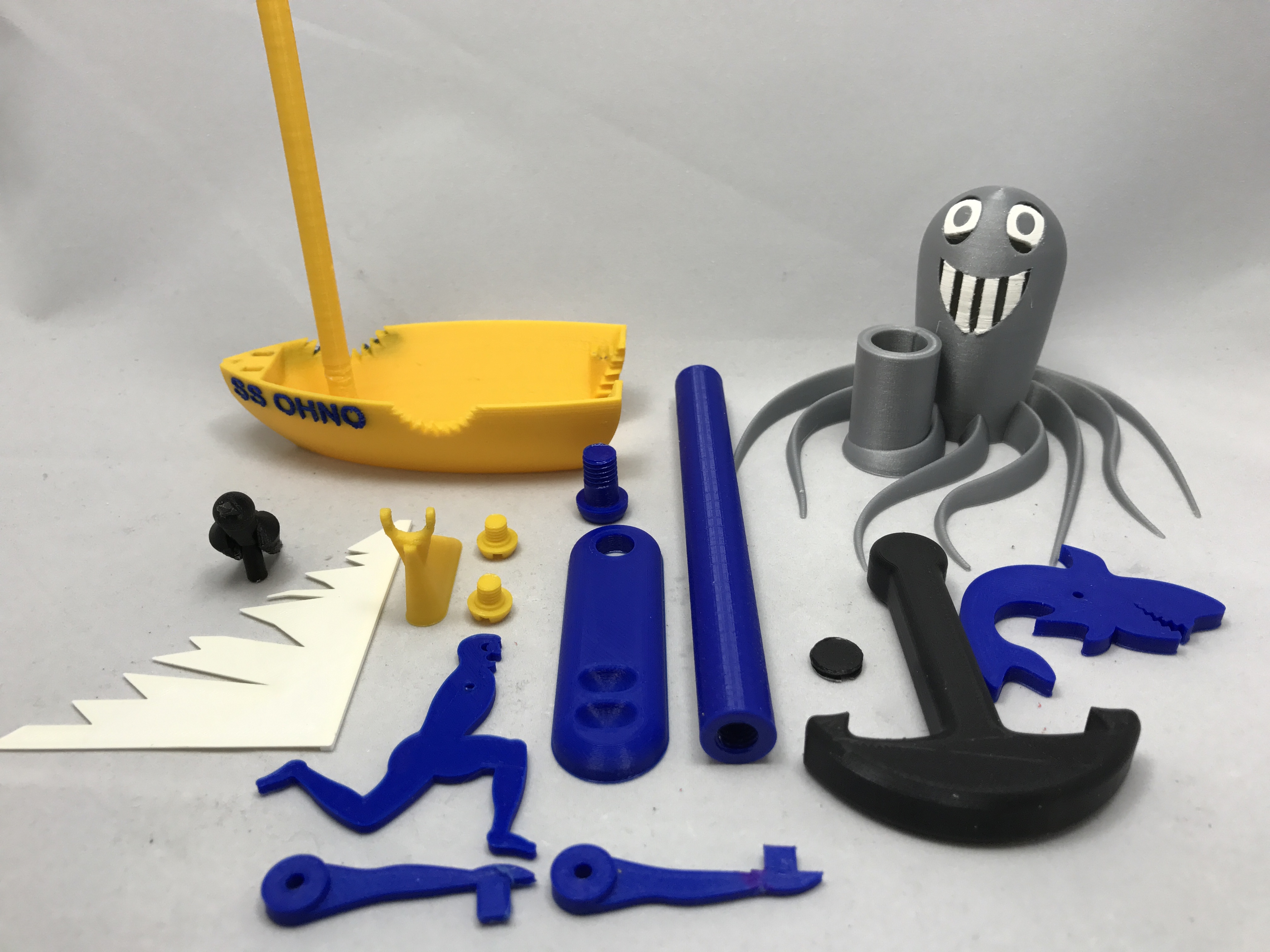
To complete SS OhNo, you'll need a 2mm diameter wire clothes hanger (I found a white one in my closet, but they are available at the dry cleaners), and 4.5mm diameter BBS (available on line and in sporting goods stores), fine modeling sand, lead shot, or similar heavy material for ballast.
I printed all parts on an Ultimaker 2+ Extended and an Ultimaker 3 Extended at .1mm vertical resolution and 100% infill for "Anchor.stl", 20% infill for the remaining parts, and no supports.
I printed the boat and octopus with dual extrusion and I've included those parts in both ".3mf" and ".stl" (file name ending with "DE") format. I've also included parts for single extrusion.
Prior to assembly, test fit and trim, file, sand, etc. all parts as necessary for smooth movement of moving surfaces, and tight fit for non moving surfaces. Depending on the colors you chose and your printer settings, more or less trimming, filing and/or sanding may be required. Carefully file all edges that contacted the build plate to make absolutely sure that all build plate "ooze" is removed and that all edges are smooth. I used a flat jewelers file and plenty of patience to perform this step.
Downloads
Assemble the Base.
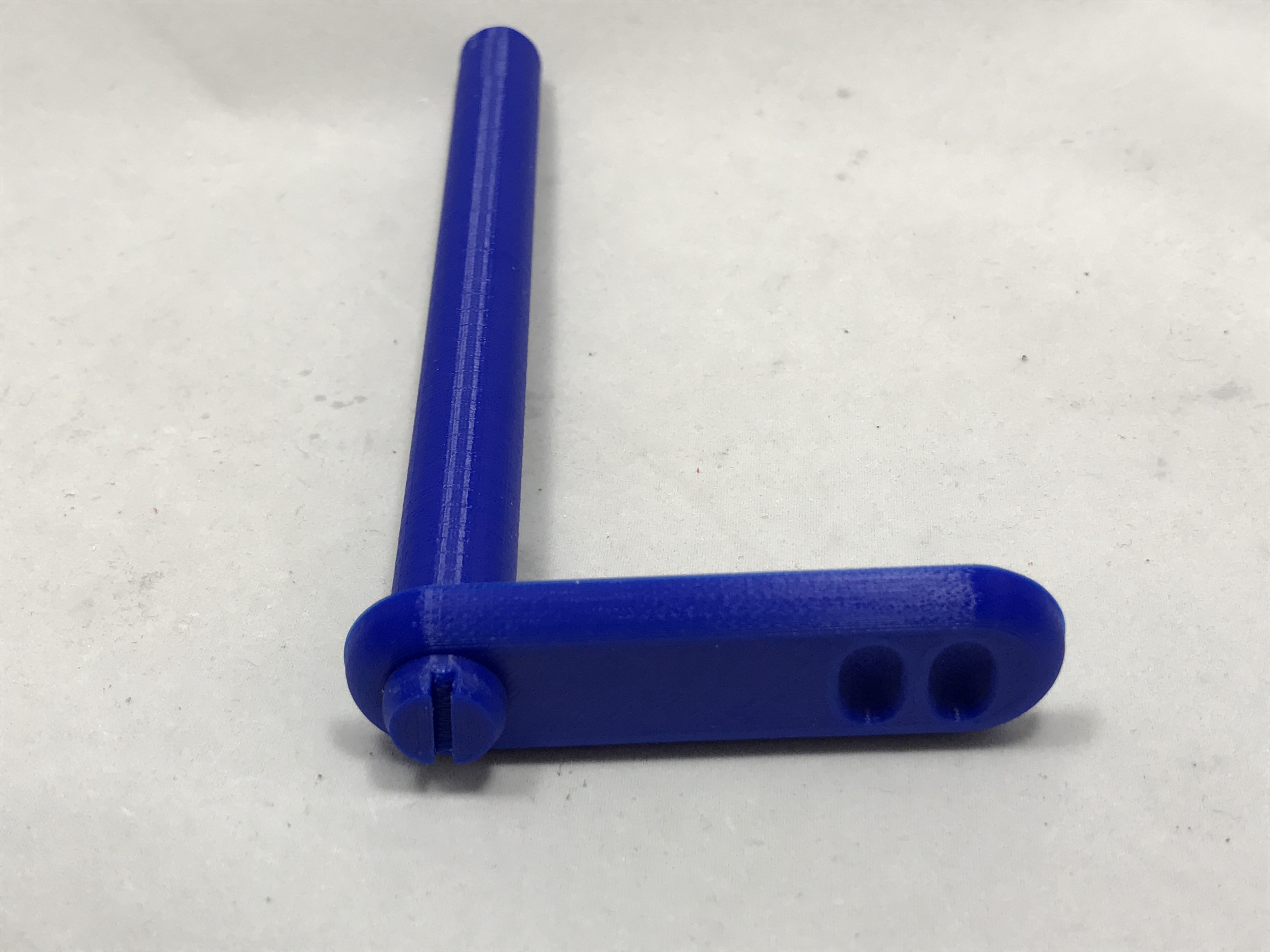
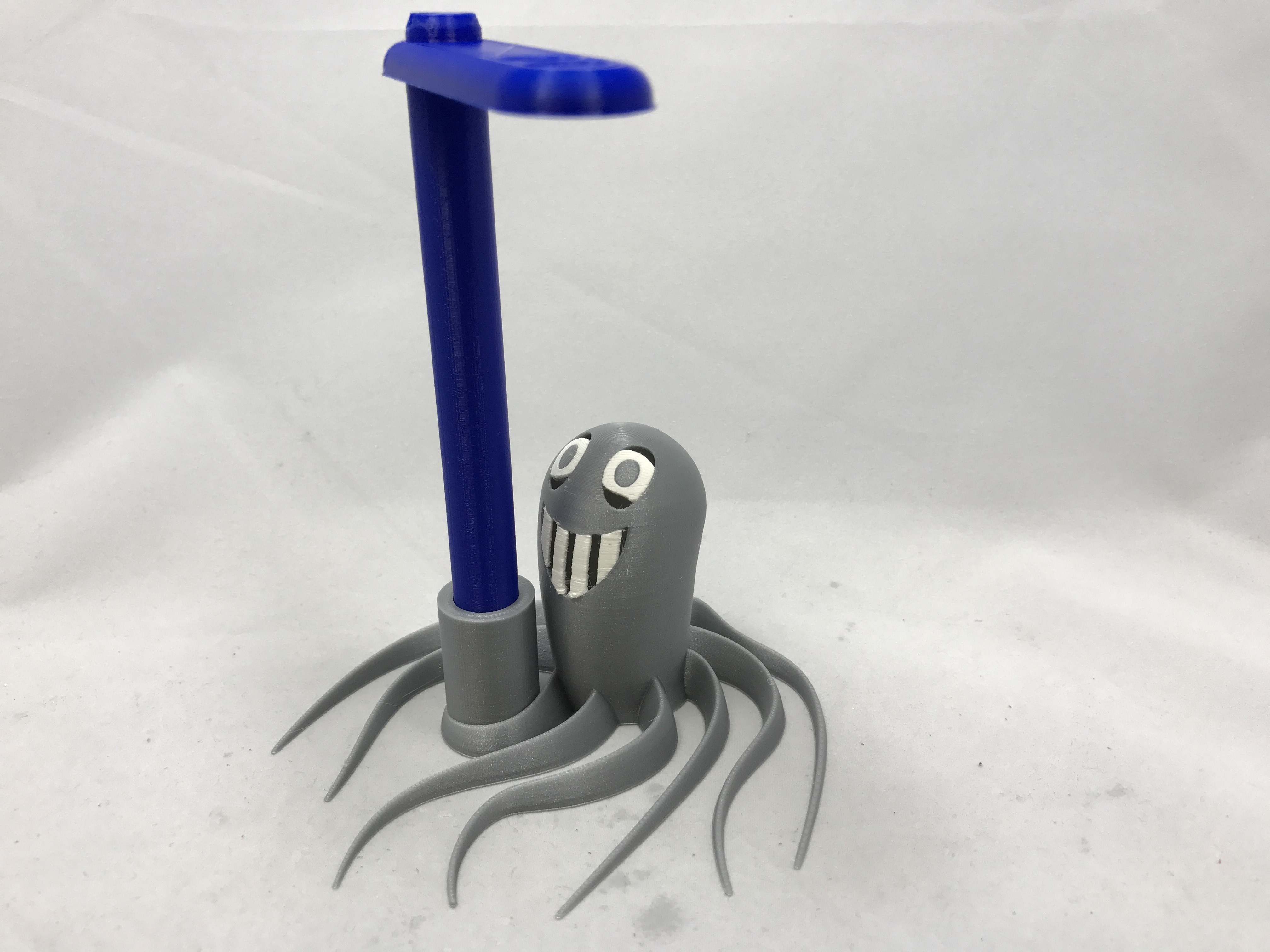
Secure "Tower Tray.stl" to the top of "Tower.stl" using "Tower Screw.stl". This is the tower assembly.
Press the tower assembly into the tower holder in the octopus.
This is the base assembly.
Assemble the Boat.

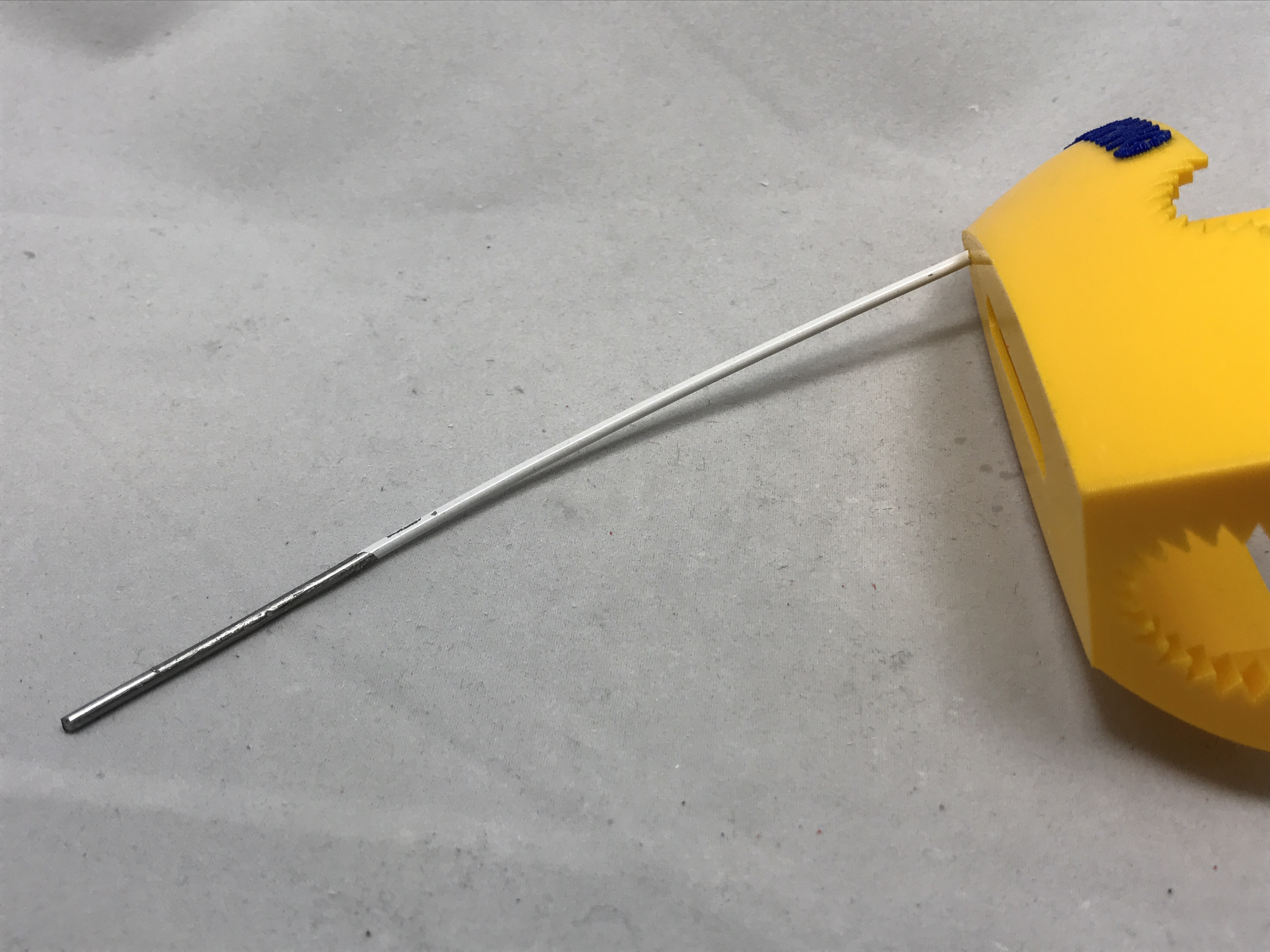
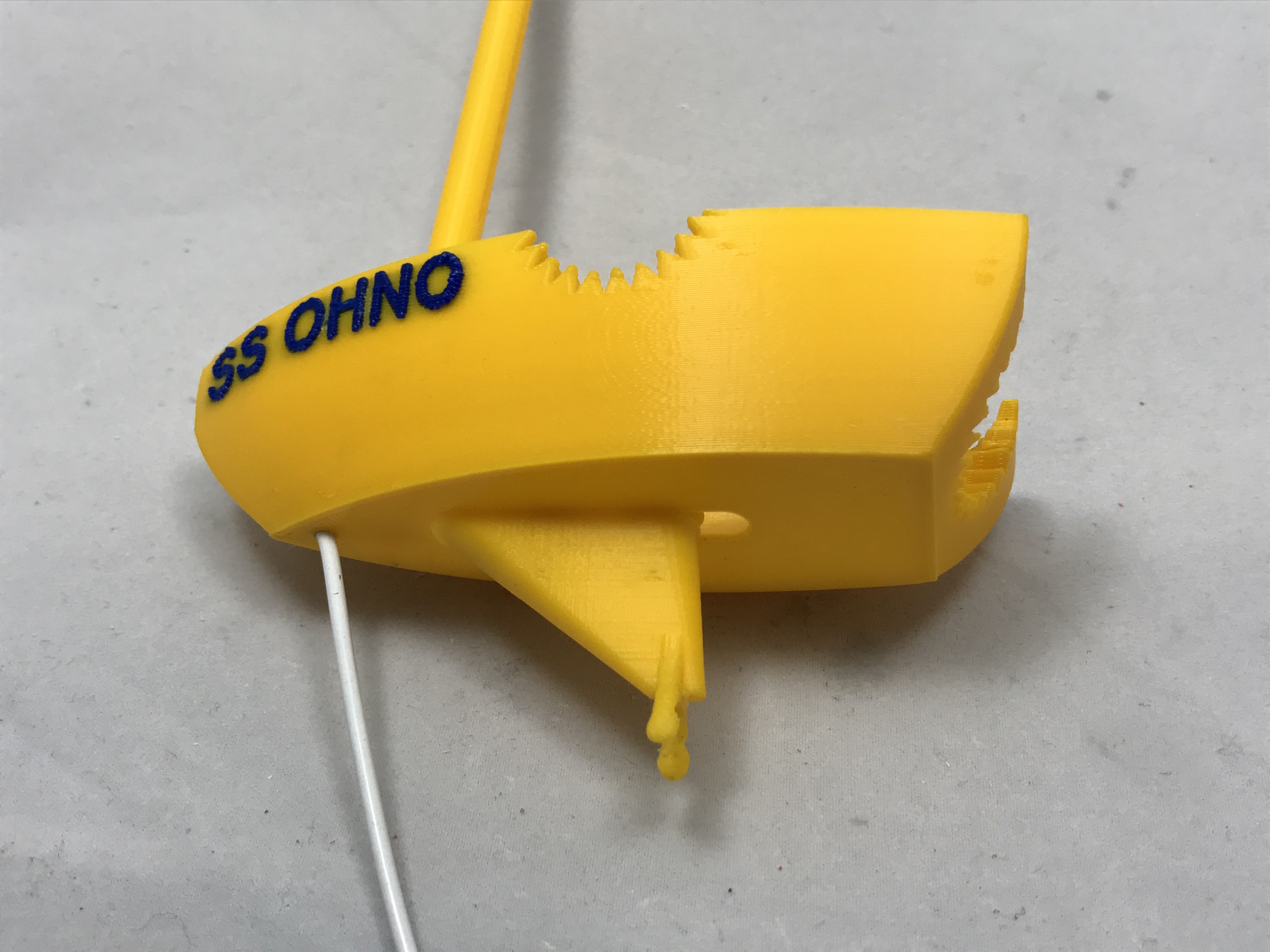
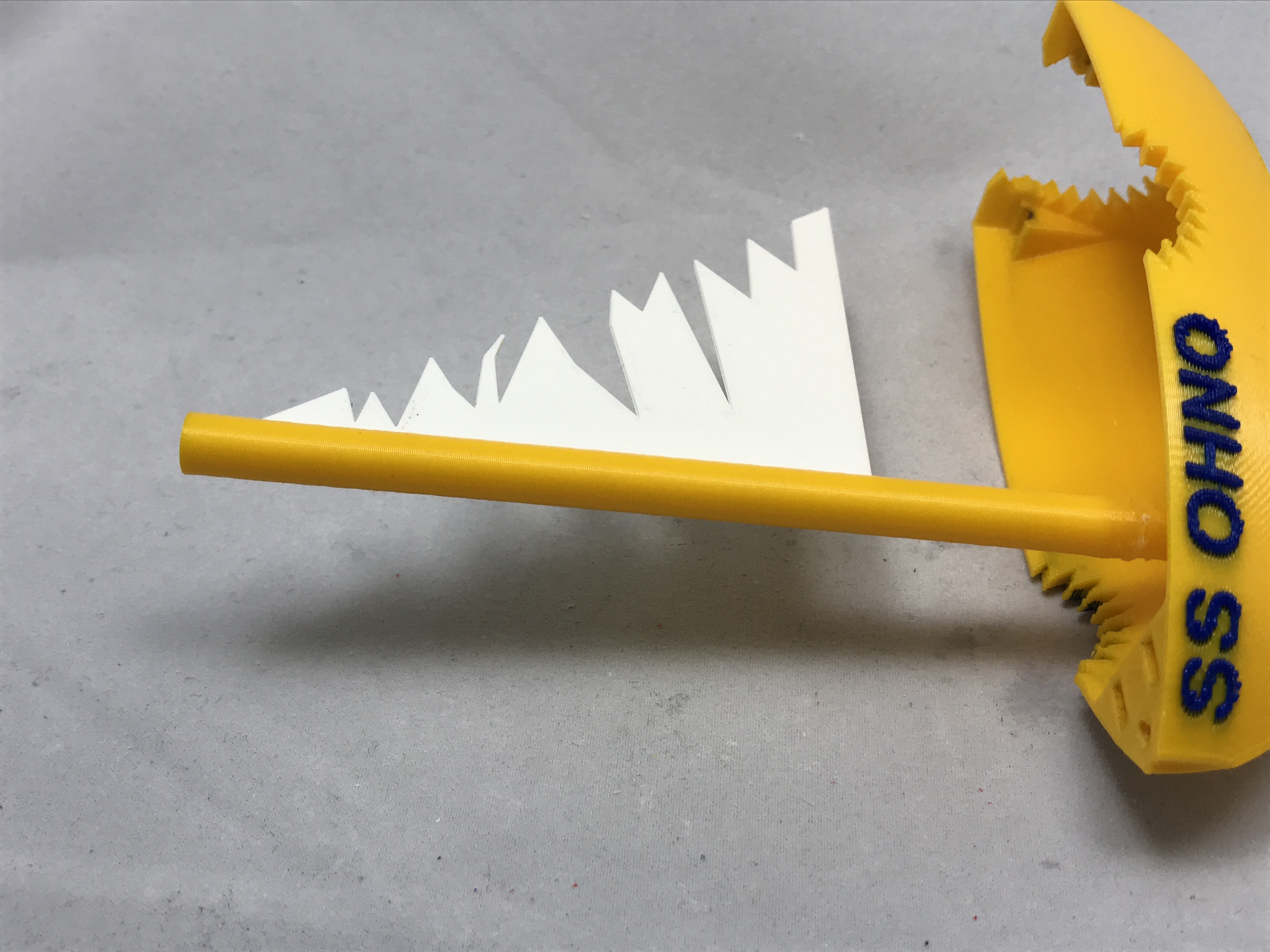
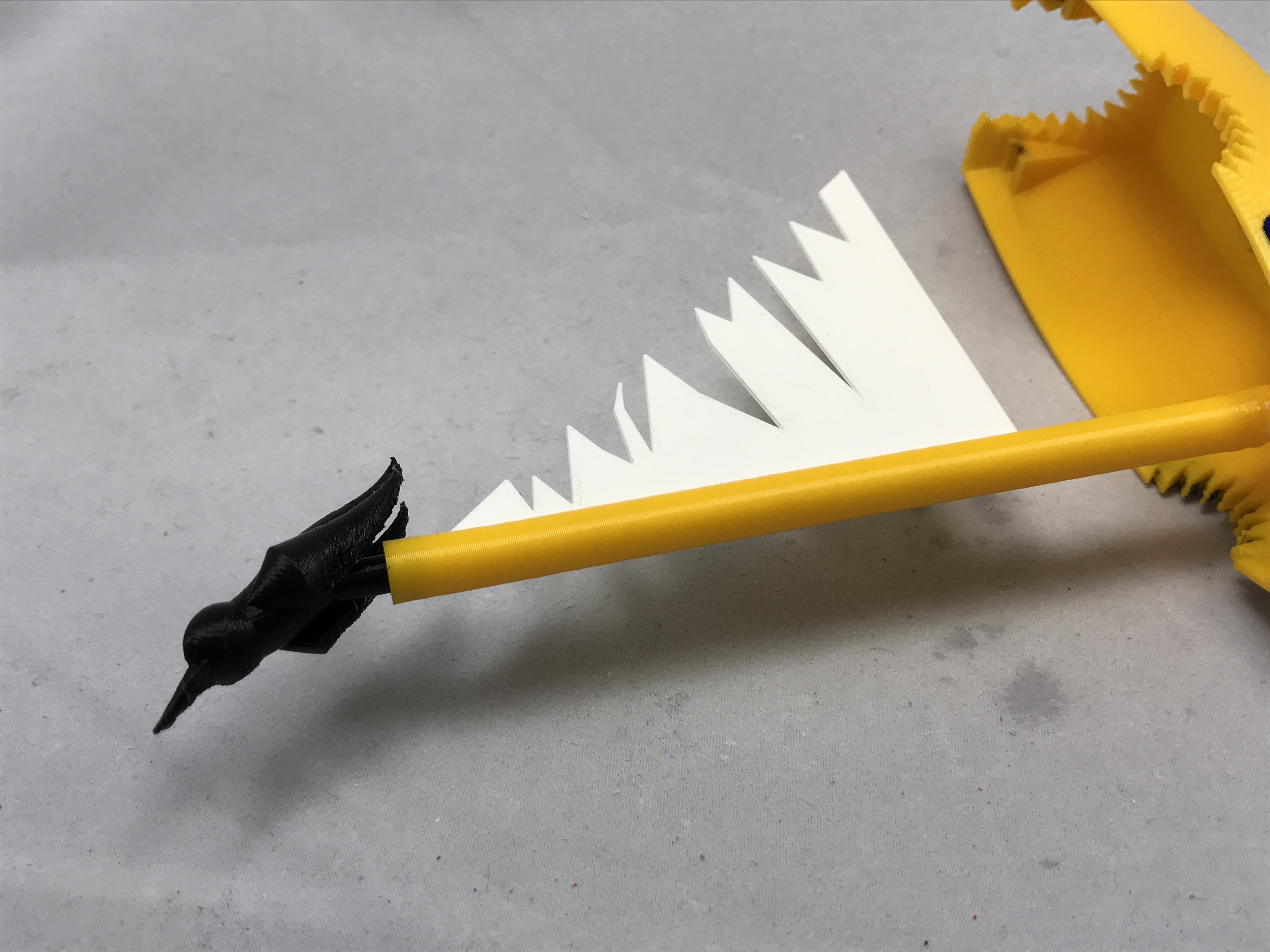
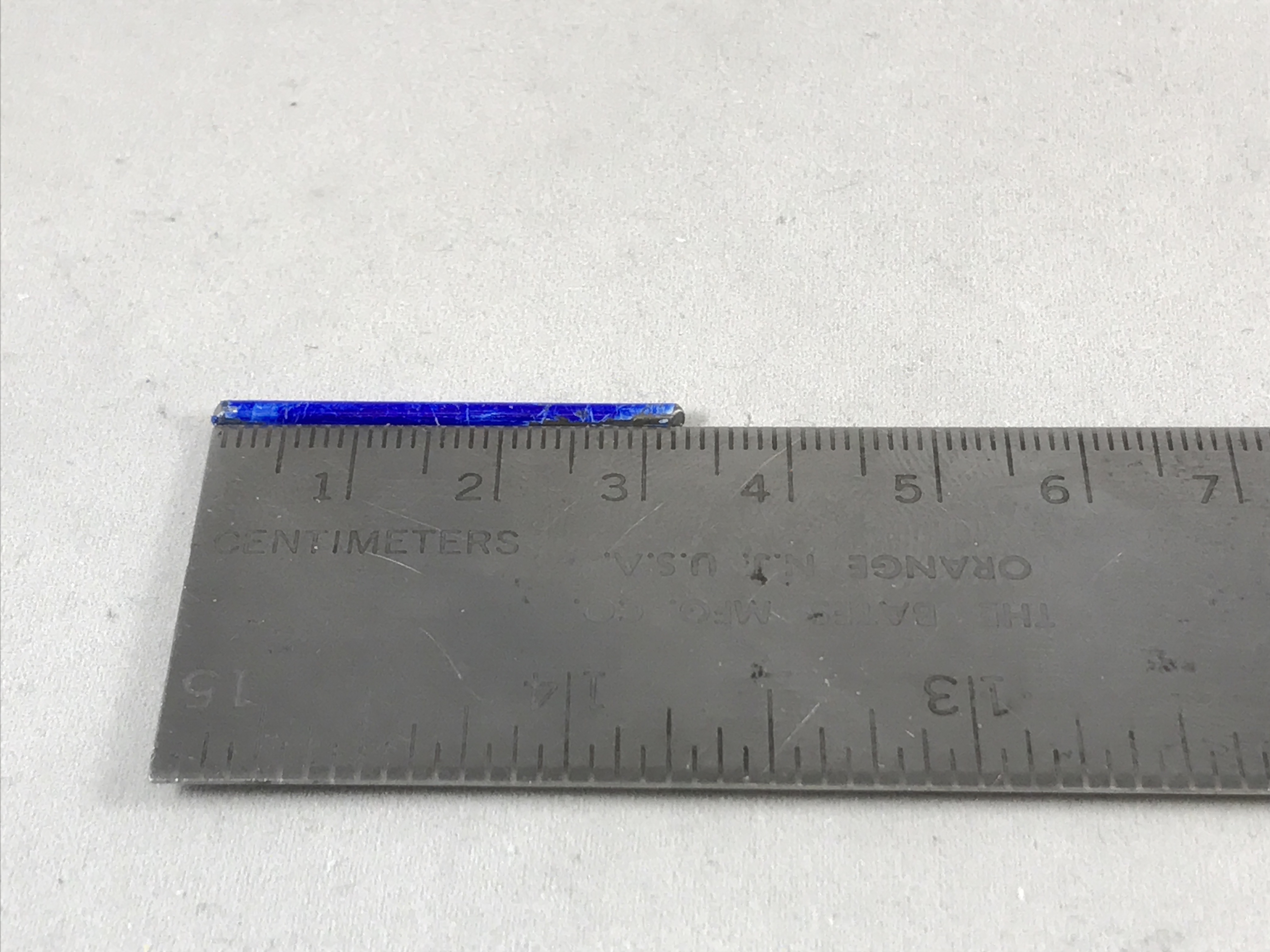
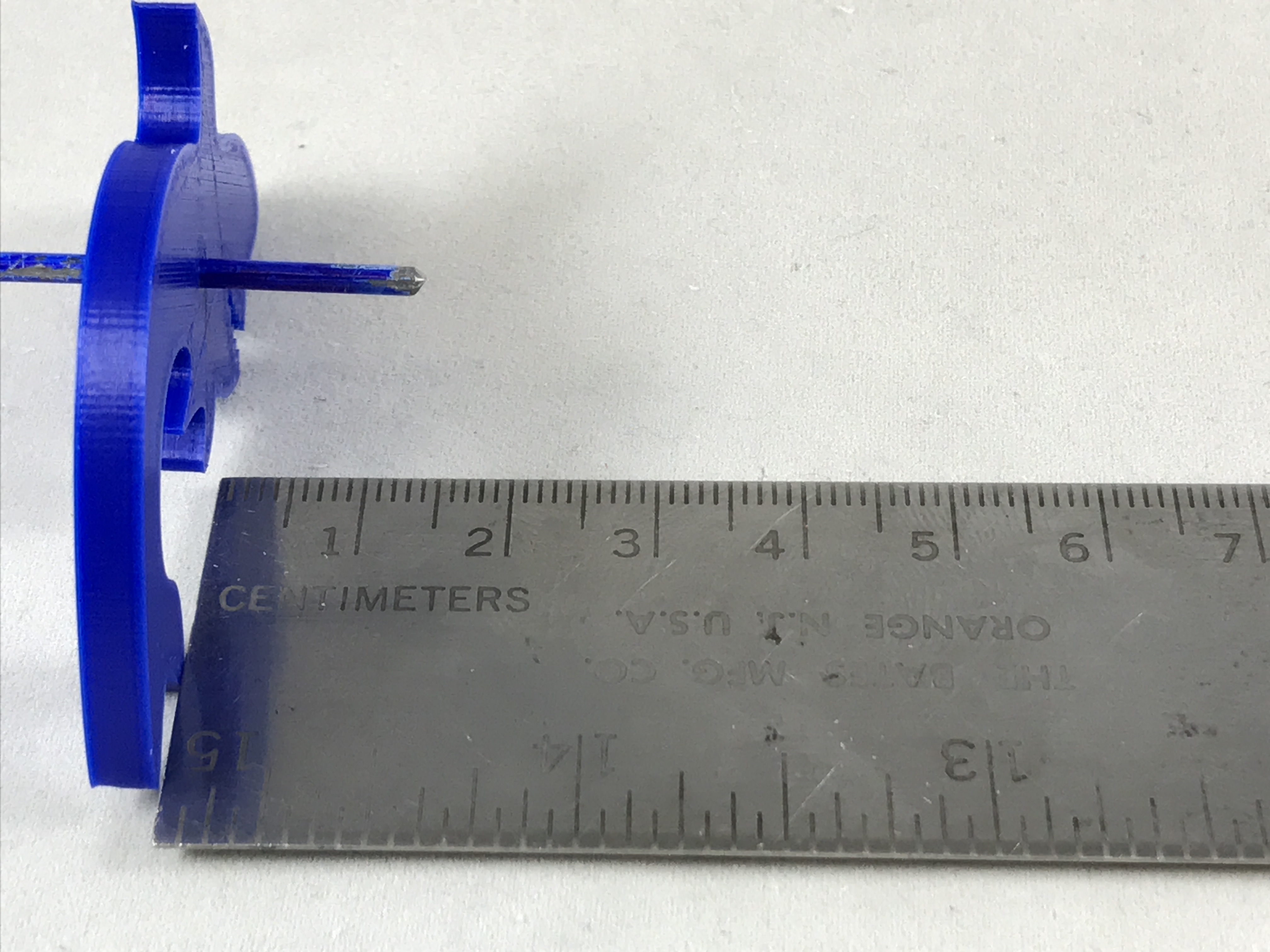
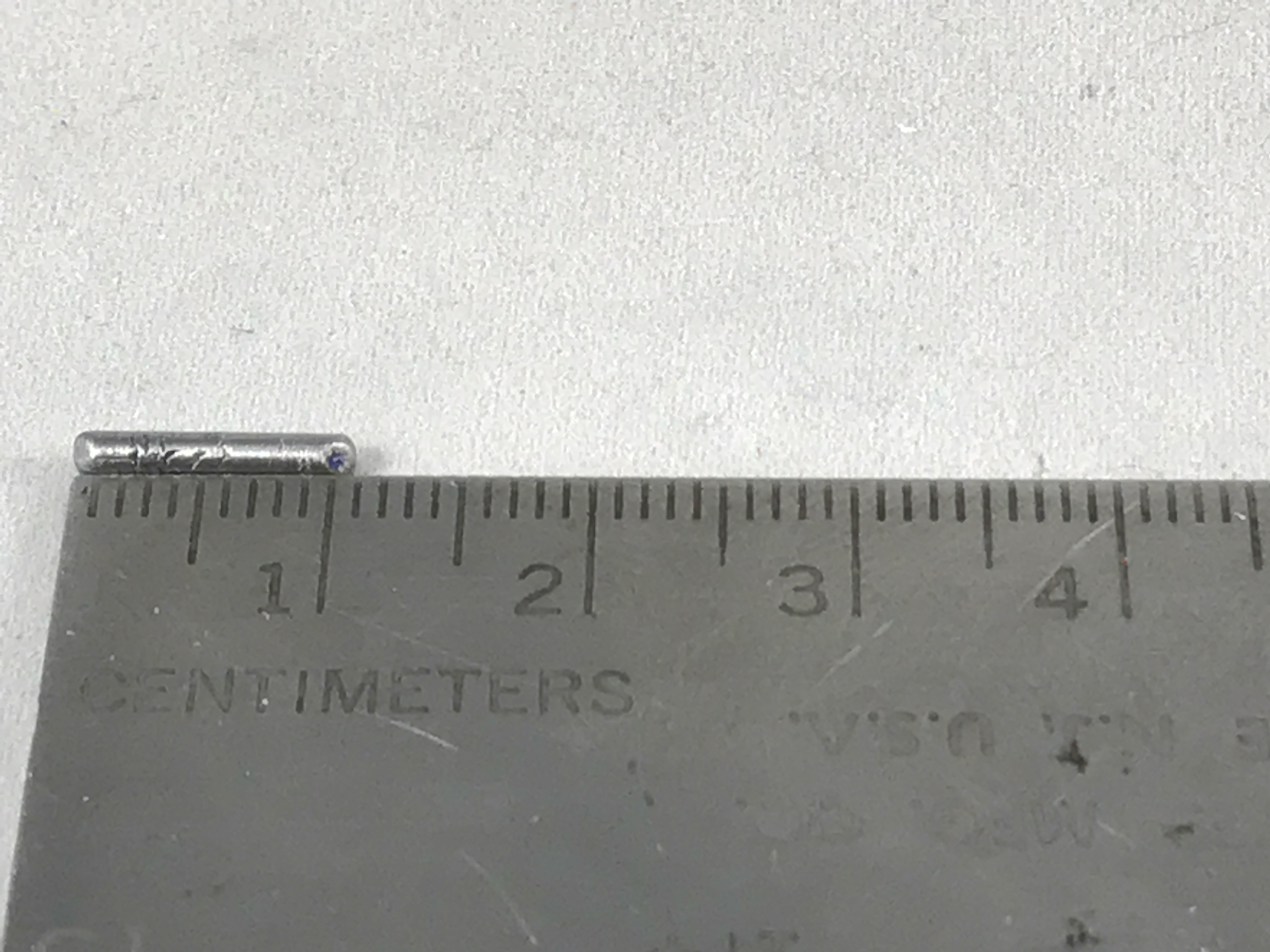
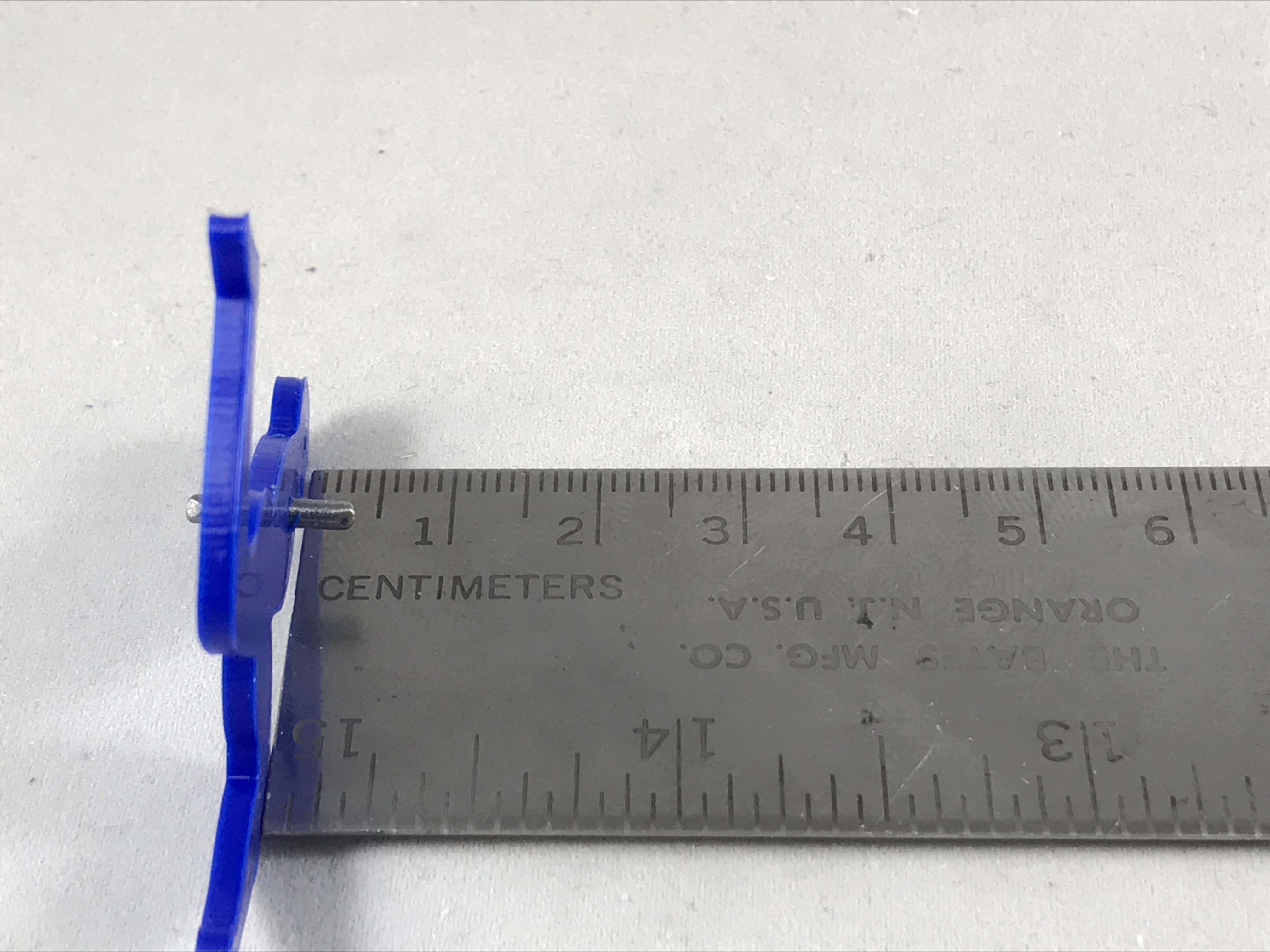
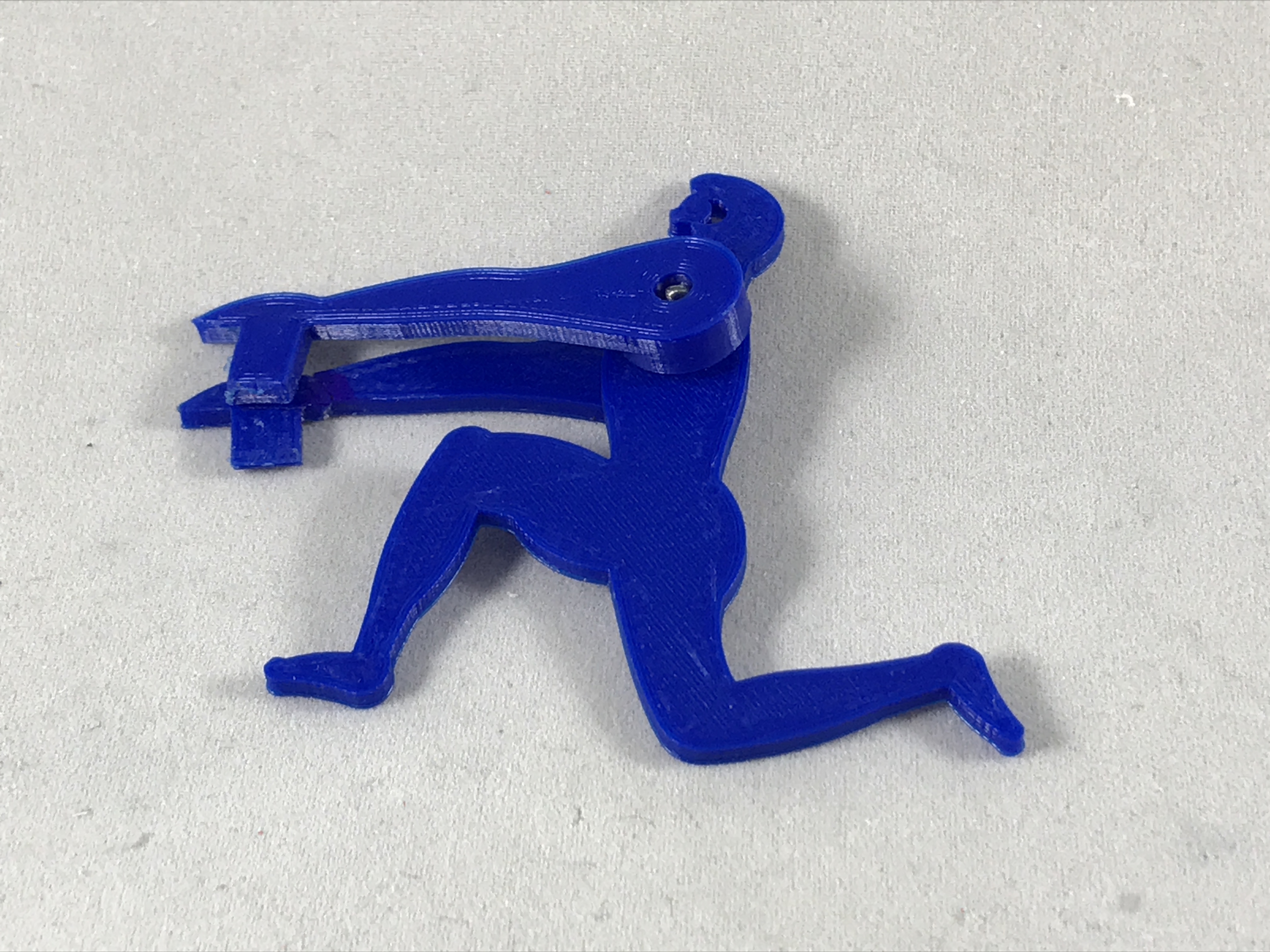
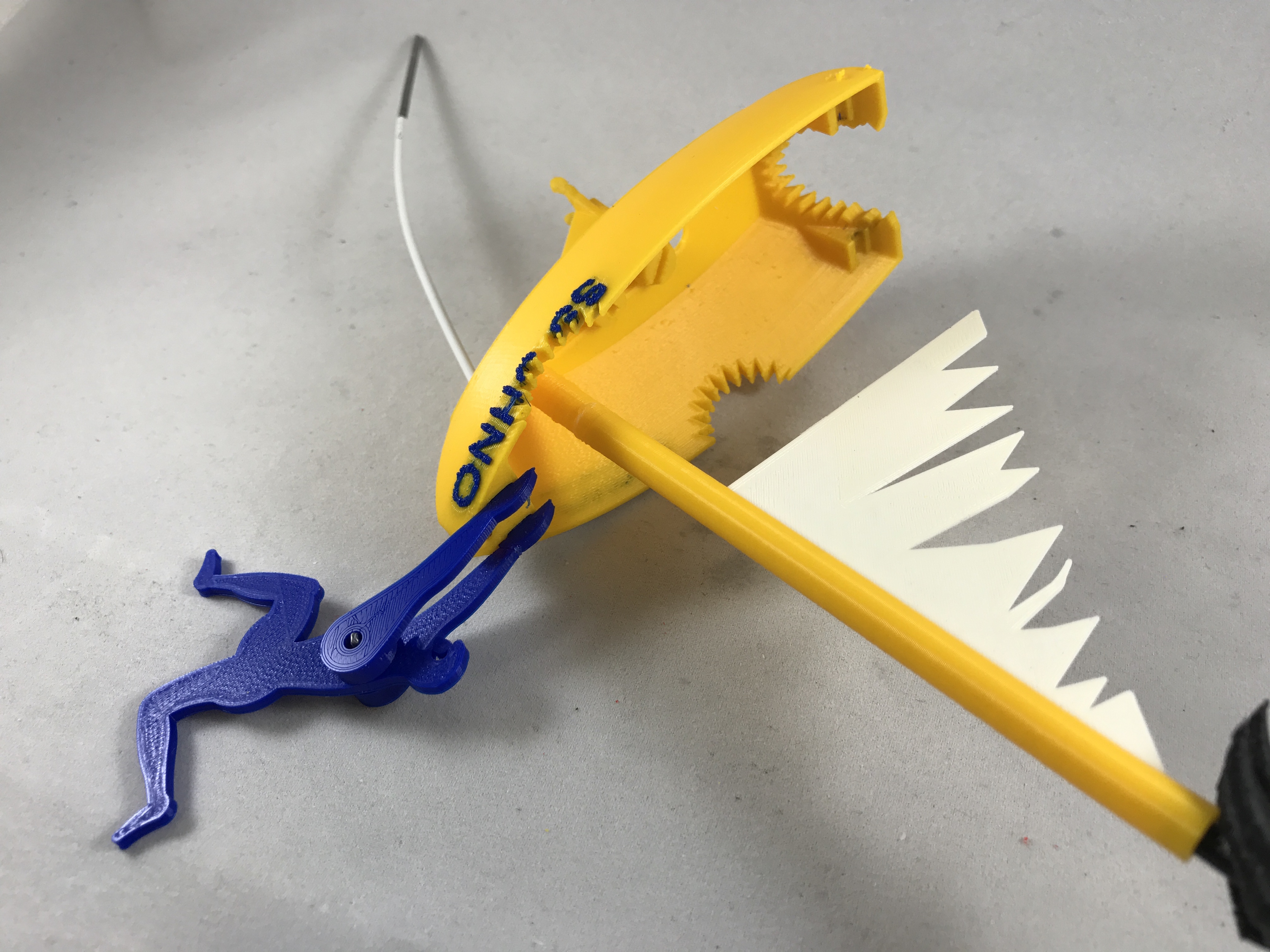
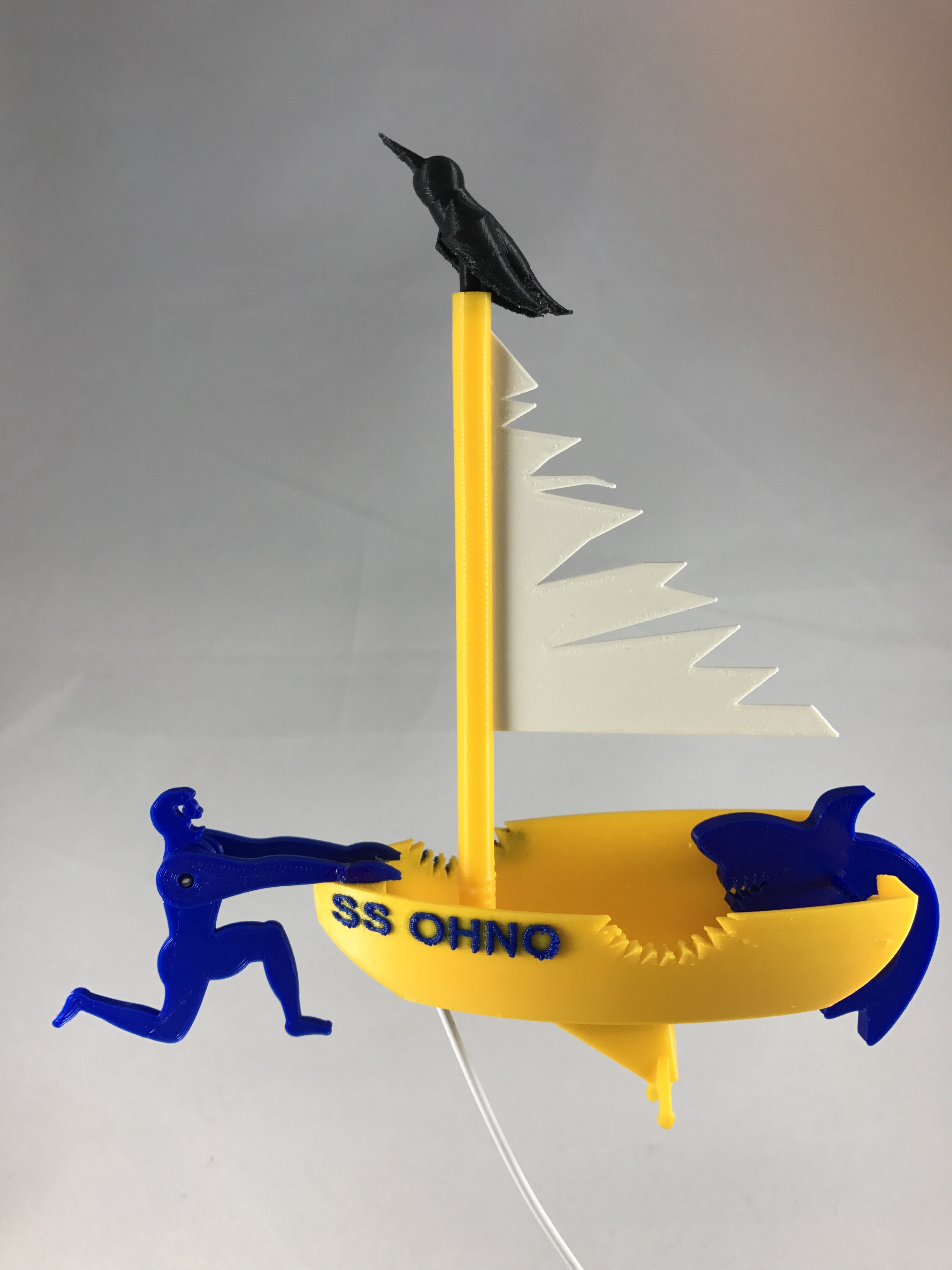
The anchor "rope" is made using a 14cm (approximately 5.5") length of white clothes hanger. Once cut and sanded smooth, scrape away the white paint from both ends as shown (this makes it much easier to insert into the boat and anchor) then bend the rope into the shape as shown. Press the 10mm bent end of the rope into the rope hole in the bottom of the boat as shown.
Secure "Keel.stl" onto the bottom of the boat as shown using the two "Keel Screw.stl" components.
Slide "Sail.stl" into the mast slot of the boat.
Press "Bird.stl" into the top of the mast to secure the sail in place.
The shark axle is a 32mm length of clothes hanger. Once cut to length and sanded smooth, press the shark axle into the axle hole in "Shark.stl", centering it such that 14mm of the axle extends from each side of the shark. I colored my axle using a blue permanent marker since it is visible in the boat.
The sailor axle is a 10mm length of clothes hanger. Once cut to length and sanded smooth, press the sailor axle into the axle hole in "Sailor Torso.stl", centering it such that 4mm of the axle extends from each side of the sailor torso.
Place "Sailor Arm Left.stl" onto the left end of the sailor axle. Place "Sailor Arm Right.stl" onto the right end of the sailor axle. Press both sailor arms into the sailor arm holes in the front of the boat as shown.
Place the shark into the slots in the rear of the boat.
Balance and Sail SS OhNo.
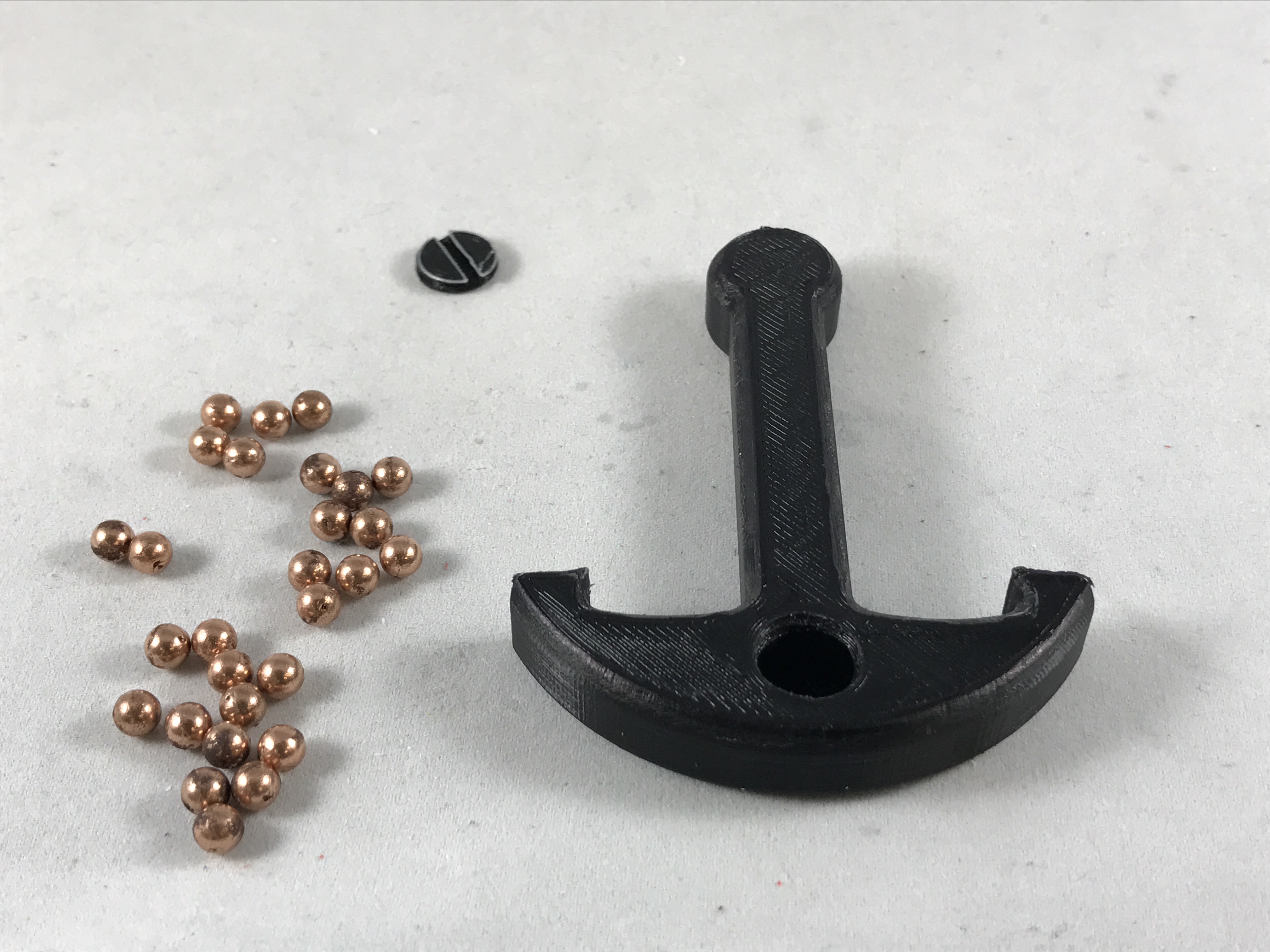
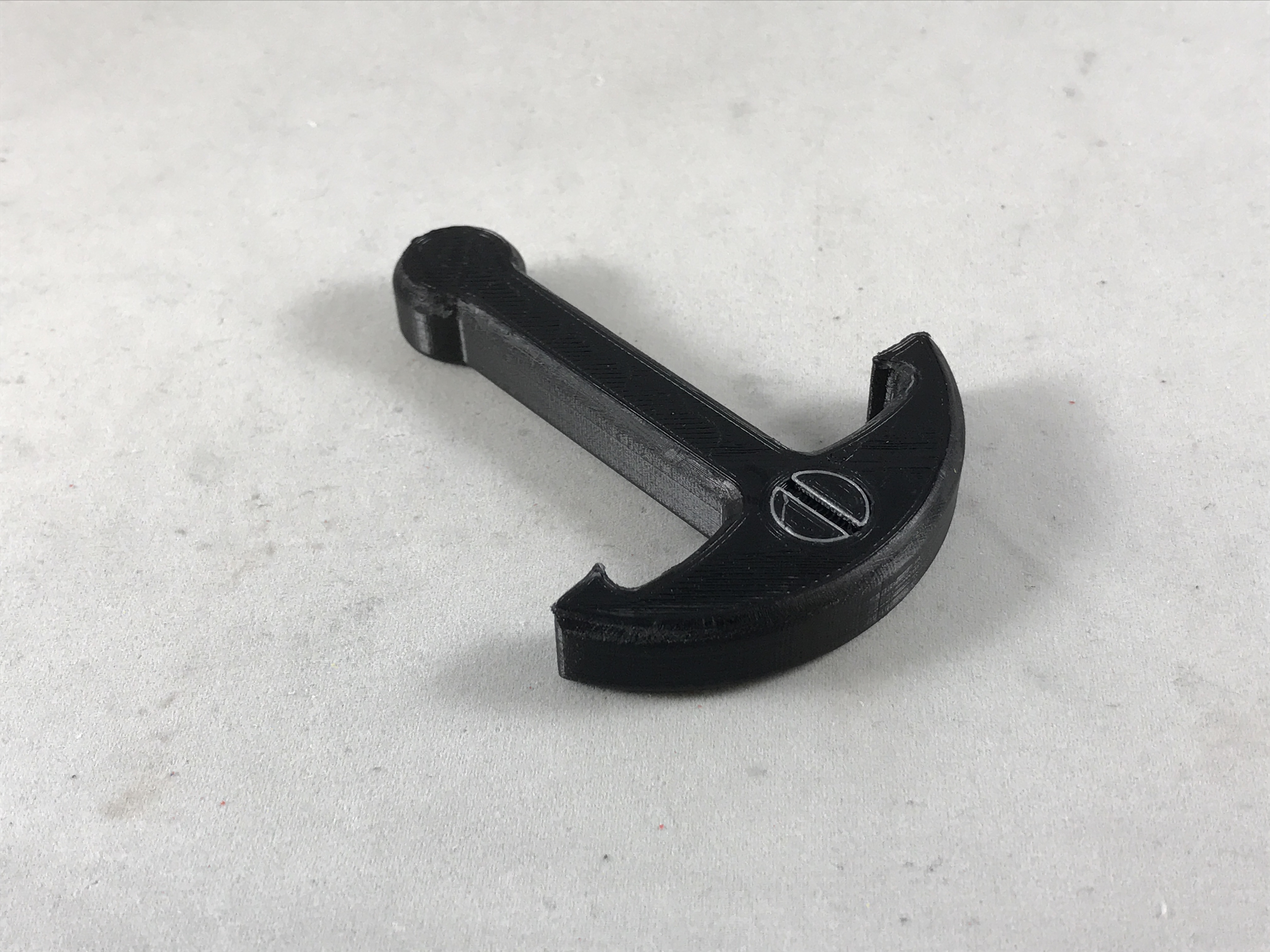
There are four adjustments to allow balancing of SS OhNo; the keel position can be adjusted fore and aft, the anchor can be slid up and down the rope, the rope can be bent, and finally anchor ballast can be adjusted.
I started with a total anchor weight of 21 grams. My printers printed the anchors at a weight of 11 grams, and I added 28 BBs (10 grams) of ballast to the anchor and secured them inside the anchor using "Anchor Screw.stl". Once assembled, press the anchor onto the rope into the position as shown in the cover photograph.
Next, level the boat. Start by carefully positioning the complete boat assembly into the slots in "Tower Tray.stl" and examine the movement of the boat. If it is perfectly level, you're done! But more than likely it will not be level and making various adjustments will be required. My SS OhNos simply required keel adjustment. If the nose of the boat was high, I slid the keel towards the rear of the boat, and if the nose was low, I slid the keel towards the front of the boat. Once in position, secure the keel into position by tightening the keel screws.
Finally, gently tap the anchor to rock the boat. If it rocks slowly or falls off the tower (the boat may swing wildly and perhaps even fall off the tower), your anchor is still too light and additional ballast is needed. If there is no room inside for additional ballast, then adding additional ballast on the backside of the anchor is required. Glue either washers, extra lengths of clothes hanger, etc. to the back side of the anchor then readjust as necessary until the boat is balance and swings with a gentle rocking action.
Happy sailing, and I hope you like it!